As the UK’s first seed to bottle producer of rapeseed oil, our British heritage is incredibly important to us! From 24th September to 8th October, the UK has been celebrating British Food Fortnight with the hashtag #BritishFoodFortnight. To show our passion for British food, we’ve been sharing our favourite recipes on Twitter each day. In case you missed these recipes, we’ve collated them all here for you. So take a look through and let us know which ones you’ll be trying next.
No self-respecting roast dinner would ever be seen without these by its side. Using our British cold pressed rapeseed oil on your Sunday roasties ensures you the crispiest potatoes. Thanks to the high smoke point of the oil, your potatoes can get nice and hot, helping them get that crispy coating.
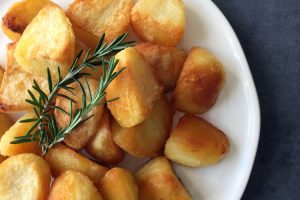
A quintessentially British fruit, the humble plum sings in this Plum Cake recipe. With ground almonds to add a nutty flavour, this cake is fantastic for a Sunday afternoon tea, or even just to whip up mid-week for a surprise guest!

Using British beef, this recipe will always go down well when brought to the table. Simple, perfectly seasoned and deliciously succulent, it truly is a classic dish. We love our steak served with potato wedges and garlic mushrooms, but there are so many other options you could choose from.
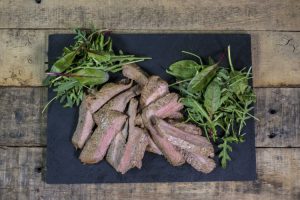
Almond and rhubarb make perfect partners in our Rhubarb Cake, which is an easy yet impressive bake. This is a fantastic way to use any seasonal rhubarb you have, as well as impressing your family with a delicious treat for them to tuck into!

One Pot Honey & Mustard Parsnip Chicken
This recipe uses our Honey & Mustard dressing as a delicious cooking sauce. Simply pour the sauce over your chicken thighs and British parsnips, pop it in the oven and there you go, a tasty one pot dish that’s perfect to warm you up during the colder weather that British Food Fortnight signals.
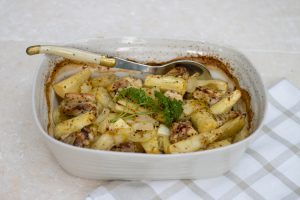
Usually eaten at Easter time, British lamb can also be sourced later on in the year with a stronger, more developed flavour. Our recipe for Roast Lamb uses garlic, rosemary, lemon and plenty of seasoning to bring out the most flavour possible from your lamb.
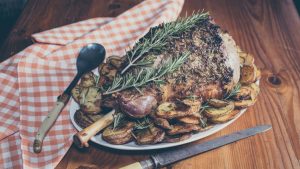
A true British favourite, we couldn’t talk about British Food Fortnight without including these. In our opinion, no matter what meat you’re having, no Sunday roast is complete without a Yorkshire pudding brimming with gravy. Get your oil nice and hot, ours has a high smoke point which really helps, to get those puddings rising nice and high!

Blueberry & White Chocolate Muffins
The delicate flavour of Mellow Yellow lends itself perfectly to cake baking and is particularly good in these marvellous muffins. Blueberry and White Chocolate Muffins fresh from the oven will attract the entire household, so make sure to grab one for yourself before everyone else descends!

Such a simple side to make, and goes with so many different things. We like using British rooster potatoes in our Potato Wedges, but you can use any type of potato. A drizzling of Mellow Yellow and a good pinch of salt is all you need to create the most delicious wedges to be enjoyed by the whole family.

A beautifully light and fluffy lemon cake with a zesty lemon drizzle icing. Quick and easy for an everyday treat for the family but makes an impressive afternoon tea centerpiece if you’re planning a party.

Fresh Asparagus and Mellow Yellow Mayonnaise
British asparagus has to be one of our highlights of June, especially when combined with our delicious Mellow Yellow Mayonnaise. Our favourite way to serve this is by BBQ’ing the asparagus then serving it in a big pile with plenty of mayo ready for dipping!

This recipe produces a really easy, moist fruity apple cake. A perfect way to use up any seasonal British apples (cookers or eating apples) whichever you have in the garden or the fruit bowl. Served with creme fraiche, or even ice cream if the weather is warm enough, this cake is sure to be a hit!
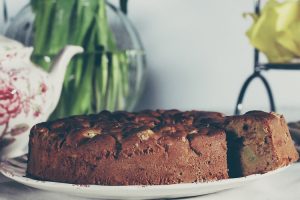
A wonderfully unusual way to use courgettes when in season. This fluffy courgette cake with its delicious lime cream cheese filling is a coffee morning or afternoon tea show stopper!

Pastry no longer needs butter! Using our incredibly simple recipe, you can make a quick and delicious pastry with Farrington’s Mellow Yellow Rapeseed Oil. This recipe is for a fruity Blackberry and Apple Galette, perfect with a hearty pouring of custard or double cream.

British Food Fortnight has been a great way for us to shout about all the amazing food produced in Britain, but just remember to keep buying British! Tweet us and let us know which recipe is your favourite!
We are over the moon to have won not one, not two, not even three, but SIX stars at the 2017 Great Taste Awards for our Farrington’s Mellow Yellow products this year. The judges have awarded a 1 star Great Taste award to each of our Classic Vinaigrette, Honey & Mustard Dressing, Balsamic Vinegar Dressing, Chilli Oil, Mayonnaise and Garlic Mayonnaise. For most products, this is their second, or even third Great Taste award but for our Chilli Oil, this is the first time it has been awarded a Great Taste star and we couldn’t be happier!
The Great Taste awards are the world’s largest and most trusted food and drink awards, with a panel of over 500 experts judging each product, being described as the ‘Oscars of the food world’. This year, 12,366 food and drink products entered into these prestigious awards, with only the very best products being awarded the coveted stars.
Here’s what the judges had to say about our products:
Chilli Oil: A wonderful colour and clarity. The nuttiness of the oil is retained and a subtle hint of chilli makes a wonderful condiment for cooking.
Balsamic Dressing: Lovely fruity sweetness that lifted the palette.
Classic Vinaigrette: Herbs add to the complexity of flour with all the ingredients working in harmony.
Honey & Mustard Dressing: The honey flavour balances well with the mustard. Love the ‘pop’ of the mustard seeds too.
Mayonnaise: A very good colour, and the rapeseed oil really works well here. It’s light and creamy textured, and well seasoned with a light hand.
Garlic Mayonnaise: Good clean creamy mayo with a well-judged hint of garlic. Lovely richness and mouthfeel.
We’re so proud of all our brilliant products, so if you haven’t tried them all, head over to our Where to Buy page and find your local stockist!
Do you love finding new local food producers, farm shops, restaurants and pubs? Well we do too, so we’re proud to now be part of Great Food Club. Great Food Club is an independent website that selects and recommends local food and drink independents. Based purely on merit, Great Food Club checks all its members before allowing them to be listed on the site. They use the simple criteria of ‘would we recommend this to our foodie friends?’ The great news is, they would happily recommend us!
One of our favourite things about the Great Food Club it’s perfect for finding great food in your local area. We’re incredibly proud of the fact that we are a Northamptonshire producer and so this guide is great for other Northamptonians to hear about us. By simply entering your post code, you can discover a world of fantastic foodie finds, right on your doorstep!
It is free to join the Great Food Club. Simply head over to www.greatfoodclub.co.uk and sign up. It is a fantastic way for foodies to find local producers, restaurants and shops in their local area. They will send you a membership card, which you can use in certain establishments to claim a discount.
You can find us on Great Food Club at http://www.greatfoodclub.co.uk/business/farringtons-oils/. If you love our products, which we hope you do, please feel free to leave a review and let everyone know!
Not only available in shops, we also sell our oil to various pubs, restaurants and cafes across the UK for use in their kitchens. Many of these businesses use our oil in interesting and innovative ways, and The Mermaid at Ellington is no exception!
The Mermaid can be found in the idyllic Cambridgeshire village of Ellington in a beautiful 14th Century public house. The name comes from the old ships timber used in its construction many years ago. The owner and head chef, Nick Marriott, is a Michelin star-trained chef who is passionate about bringing vibrant and refreshingly new ideas to a characteristic and historic country pub.

Having used our oil for a while, Nick recently contacted us with an idea. He wanted to use our rapeseed before it was pressed, and instead, germinate the seeds for an exciting new dish.
Here’s what Nick had to say about this innovative new way of using rapeseed:
“Here at The Mermaid at Ellington, Mellow Yellow Rapeseed Oil has fast become our go to quality oil of choice. With it being high in mono-unsaturated fat, it ensures us cooking at high temperatures without corrupting its lovely nutty character & flavour.
We now also use rapeseeds to bring to life our ‘Snail Garden.’ We germinate the rapeseeds and grow them into small sprouts by soaking the seeds and keeping them in a warm area to do their work. This process usually takes around 5 days but is definitely worth the wait. The germinated rapeseed add a beautiful image and perfect texture of a real life soil, as well as adding an earthy flavour to the dish. Combining the rapeseed with puffed wild rice & quinoa, caramelised chicory & sesame, the ideal soil is created for the garden. Hidden underneath sits a smoked garlic yoghurt and finished with salsify bark, baby vegetables and rosemary branches with flowers from the Mermaid garden.
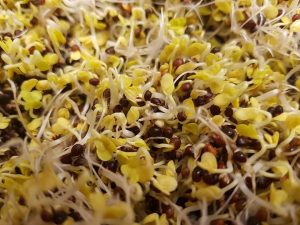
Mellow Yellow Rapeseed Oil is also a perfect option for dressings and creating flavoured oil in which we make a lemon grass & ginger oil for all our Asian style cooking. We very much recommend this high quality product.”
Thanks Nick!
For more information on The Mermaid at Ellington, head over to their website: http://www.themermaidellington.co.uk
Here at Farrington’s, we don’t use neonicotinoids on our rapeseed crop. This is for many reasons, mainly because of the concerns related to this pesticide and the effect on bees. You can read more about our bee friendly rapeseed and what else we do to keep the bees on our farm healthy and happy here.
Friends of the Earth, a campaign group looking for solutions to environmental problems, is concerned about the impact of neonicotinoids on bees and other pollinators and urged farmers to join them in pledging not to use neonicotinoids. We were asked us to join the Bee Friendly Shoppers Guide to Rapeseed Oil, of which we are 1 of only 7 rapeseed oil producers on this list. Of course we said yes! The guide aims to educate shoppers on which oils to buy, and how these oils are helping Britain’s bees. As part of the guide, we have pledged not to use the three neonicotinoid pesticides which are currently restricted across the EU, and will continue to avoid these pesticide even if the ban is lifted.
The Bee Friendly Shoppers Guide to Rapeseed Oil is supported by a number of leading chefs. These include Kevin Gratton, chef director for Mark Hix Restaurants, David Everitt-Matthias of Le Champignon Sauvage, Martin Burge, executive chef at Whatley Manor Hotel & Spa and Tom Hunt, eco chef owner of Poco Tapas Bar. Friends of the Earth, alongside the supporting farmers and chefs, are asking consumers to support the initiative by buying the bee-friendly rapeseed oils detailed in the guide.
Friends of the Earth’s Bee Campaigner, Nick Rau, said “We’re delighted Farrington’s Mellow Yellow is standing up for Britain’s bees by pledging not to use these three bee-harming pesticides on their rapeseed crops. They deserve our support. We hope more farmers and producers follow their lead and say no to these neonicotinoid pesticides. Nature-loving shoppers can back this pioneering initiative by checking out the Bee Friendly Shoppers Guide to Rapeseed Oil and choosing these products in supermarkets, local stores and online.”
To read more about the Bee Friendly Shoppers Guide to Rapeseed Oil, please visit: http://www.rapeseedoilguide.com/
We are very proud of our Northamptonshire heritage and it’s always wonderful when retailers and other suppliers give their support to local food produce and fly the ‘Made In Northamptonshire’ flag. www.underfinewraps.co.uk is a well-known hand-made hamper and gift company, based overlooking the stunning Rutland Water, and we asked founder Clare Underwood to write a guest blog for us, explaining why she chooses Farrington’s products for her innovative hamper lines. Here’s what she said:
“Our relationship with Farrington’s goes back to the very start, when I launched Under Fine Wraps with a small but carefully selected line of county themed hampers, beginning with our Northamptonshire Hamper.
It is our intention to always create hampers packed only with food, treats, snacks, and cooking produce that we ourselves are happy to eat at home. And our county hampers carry the added dimension of containing produce made in those counties, so when we wanted oils and mayonnaises from Northamptonshire, it simply had to be Farrington’s.
Our Northamptonshire Hamper features Farrington’s Mellow Yellow Rapeseed Oil, Mellow Yellow Balsamic Vinegar Dressing, and Mellow Yellow Mayonnaise – all of which are simply delicious. I cook with the rapeseed oil all the time, whether frying, roasting or baking and it’s exceptional as well as healthy.
And when Summer comes around, there’s barely a salad made in our house that isn’t splashed with the gorgeous Balsamic Vinegar Dressing. Personally, I think the combination of the cold pressed rapeseed oil with Aspall Apple Balsamic vinegar is genius and the added punch of garlic and basil is inspired.
When we started to expand our hamper range with the introduction of the Northamptonshire Food, Beer, and Wine Crate, we included the rapeseed oil and Mellow Yellow Honey and Mustard Dressing and now several of our seasonal Christmas hampers also feature Farrington’s.
Last year we launched our new ‘Manper’ range (hampers unashamedly designed primarily for men and packed with savoury goodies, top quality beers and wines) and I’m certain the Mellow Yellow Chilli Oil will be finding its way into a few of those.
We have a very simple rule at Under Fine Wraps: never put anything into a hamper that we ourselves wouldn’t eat and enjoy and we often put this to the test at food fairs and festivals, where we always offer samples of the produce from our hampers. Farrington’s oils and mayos are always very well received, particularly among keen amateur cooks, who really appreciate the high quality of the cold pressed rapeseed oil.
If you’re reading this and you live or work in Northamptonshire, or you’re originally from the county, then I’d really suggest you try out our Northamptonshire Hamper. It’s a wonderful selection of Northamptonshire-sourced foods from passionate and artisan producers including, the county’s very own wine! Beautifully packed in a quality, hand woven wicker hamper with leather straps and hinges, it makes a lovely gift.
In fact, it’s very popular as a corporate gift and one of our lovely customers uses them in their employee rewards scheme and as staff birthday and wedding gifts. Lucky them, I say!”
To try Farrington’s oils and mayonnaises alongside carefully matched fine wines, whiskies, beers, and ales, why not visit www.UnderFineWraps.co.uk
Neonicotinoids insecticides hit the headlines because their use for controlling cabbage stem flea beetle in crops of rapeseed and the suspected links to declining numbers of honeybees and native bumble bees. At Farrington’s we have more questions from our valued customers about this, than any other topic. Before I go any further, just to confirm we are growing bee friendly rapeseed, we do not use Neonicotinoids in growing our rapeseed and do not intend to if the ban is lifted.
How we grow our crops and look after the wider environment has always been my top priority at Bottom Farm. Indeed, I joined LEAF (Linking Environment and Farming) back in 1997 to learn more about doing the right thing in this area.
Why is Cabbage Stem Flea Beetle such a problem?
Rapeseed plants grow from the tiny little black seeds planted at the end of August each year. The first few weeks are vital in the survival of the crop, which requires a warm, moist soil to help it germinate and tentatively put its head above the surface, from which the tender young plants start to grow. However, these young tender plants are delicious to a number of predators including flea beetles. So much so that if the conditions are right for flea beetles, they can completely wipe out a crop overnight. After which it is often too late to replant a second crop of rapeseed, as the soil temperature has dropped below the minimum required for the plant to grow.
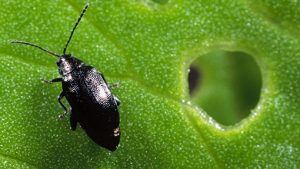
What is a Neonicotinoid?
Neonicotinoids are a group of insecticides based on nicotine. In rapeseed, the chemical is coated in tiny amounts onto the seed to be planted and moves (is translocated) into the growing plant as it emerges from the soil. When a flea beetle nibbles on said plant, there is just enough of the toxic chemical to kill the pest. But otherwise, it is a specifically targeted use of an insecticide in an ingenious way.
Concerns grew that numbers of both honey bees and bumble bees were declining, so scientists explored the potential causes. It appears there are several possible causes including; loss of habitat for bees to feed on and live in; potential pests and diseases affecting bees, such as Varroa mite; changing weather patterns, such as cool damp springs; use of agricultural pesticides.
Some research suggested that small amounts of Neonicotinoid translocated through to the pollen and nectar in the flowering rapeseed plants. When bees visited these flowers they were inadvertently ingesting the chemical which was causing them to lose their bearings; a bit like us trying to find our way home after having too much of a good night in the pub. Other research suggested longer term damage to the fertility of the bee colony.
Although research appeared inconclusive with the debate on both sides being passionate, the EU restricted the use of Neonicotinoids on rapeseed crops from 2013, until such time that more conclusive evidence is shown.
Growing Bee Friendly Rapeseed.
I use several approaches to try and grow a successful crop of rapeseed whilst looking after our bee populations.
– I use a crop rotation and have extended the rapeseed from one in 3 years, to one in 4 to 5 years. This will provide a bigger gap between the crop so as there is less food around for the flea beetle to live off, that will hopefully in time reduce the risk of attack.
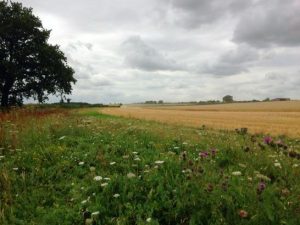
– Established wildflower meadow areas around the farm to create a perfect habitat with a variety of pollinating plants for bees and other beneficial insects to live off.
– Planting the crop into fertile soil, with the use of a healthy crop rotation which includes nutrient building cover crops to give the rapeseed the best possible chance to grow quickly out of the danger period when it is susceptible to flea beetle damage. This is backed up with a small amount of fertiliser if required.
– A local beekeeper has hives on the farm. The bees help fertilise our rapeseed and other crops, making delicious honey in the process.
– I am experimenting by growing companion crops of vetch and clover within the rapeseed. These create a friable soil structure and add nutrition to help the rapeseed plant grow well. It may also confuse a passing flea beetle as to what crop is actually growing in the field and may pass by unaware that their favourite meal is below them.
– As a final resort, we use an insecticide as found in head lice shampoo to kill bad infestations of flea beetle. If we use this, we make sure we spray the crop early in the morning or late at night, as the flea beetle will still be feeding on the crop, but the bees are all tucked up in bed.
In Summary, this hopefully explains some of the conundrums I have as a farmer in trying to do the best thing. Hopefully also, as I write in December 2016, with a temperature of -4.5°C this morning, I am confident that nature will help us enormously in reducing the number of flea beetles surviving the winter.
Day 32 in this year’s harvest and exhaustion has taken over from adrenalin. After an initial rain interrupted false start, the rape harvest went without a hitch, which despite the lack of rain in the months before, produced a pleasing ‘good average’ result. Following the rapeseed, we moved straight into to some early wheat on light land that had died a premature death from lack of moisture. This also flew by in record time, although the low yield had something to do with the speed we moved across the acres. Everything went to plan, no machinery breakdowns, long dry days and plenty of packed lunches and supplies to keep us going for two weeks without a stop, clocking up more hours than I like to think about.
Following the early wheat, we then had to be patient and wait for the next bit to mature. The weather was still perfect for combining, many neighbours were at it, but we had to wait a few more days. This is frustrating, as with experience the weather will change at any time. In theory, we only had another two weeks of combining and it would all be done for another year.
Finally, the wheat was just about ready, we combined one field with a very pleasing yield on our heavy land that I would not have expected only a month earlier. Then the rain arrived. The weather reports say the Jet Stream has gone south and our island nation is stuck between a high and a low-pressure system battling it out; the result being a prolonged period of sunshine and showers. All pretty standard, but frustrating never the less. We have now finished all of our winter wheat, combining as soon as the conditions allow, in a stop-start fashion resulting in us harvesting the same hours in a week as we were doing in a day at the start of harvest.
When conditions are like this, it is difficult to keep the adrenalin and motivation going, having to ensure we are absolutely ready in the right place when conditions are right. Late one Saturday night we needed to move the combine 300 metres from one field to another when a tyre blew on a trailer. Quickly Marvin and I got the compressor and tools to try to repair the tyre, but could soon see it was not going to happen. Rain was due the next day and we wanted to keep going. Time for blocks of wood and the forklift, and we were able to drag the trailer to the next field so the work could continue a bit longer.
We still have another few days worth of harvest to do, but I don’t know when we will get these days as August now turns into September. Father, Marvin and I have worked hard over the last month, we are all getting a little tired and some may sit grumpily at times. It is standard procedure and something long-suffering farmers’ wives and families have to put up with on an annual basis. Something I try to remember, as, without the support team in the background, the job would be impossible.
It’s amazing how a few consecutive days of dry weather completely changes one’s mood after the long wet winter. Fields that were water logged on a Monday morning and looking more appropriate for planting rice than wheat were, by Thursday afternoon, dry enough to start thinking about preparing the soil to plant our spring crops.
From an impatient farmer’s perspective, spring arrived around the middle of March, since when we have been working continuously. It is not just us, as all our neighbours are busy working away in their fields as everything appears to need doing at once.
The first job was to put some fertiliser on the autumn planted crops as soils warm up and day length increases, letting dormant crops realise it is time to start their long growth through spring. To achieve this growth, crops, like humans, require good nutrition to grow healthily, which is gained from the soil and some extra plant food in the form of fertiliser.
Fertiliser applied, attention turned to crops that are not yet planted. Firstly the spring beans, which were planted in pretty much ideal conditions in the third week of March. Next, it is the spring wheat this will take a bit longer to create an ideal seedbed, rather than rushing in just to get the job done quickly. We have started cultivation in preparation for the wheat, but on our heavy clay soils they can change from mud pie texture to concrete in the space of 36 hours, meaning that a mixture of perfect timing, a bit of luck and working with nature rather than fighting it is the name of the game.
In addition to being busy on the farm, we also start thinking about the new season of shows in Farrington Oils. Farrington’s Mellow Yellow is now ten years old and I have always enjoyed meeting customers at food shows, as they provide the perfect opportunity to explain to existing and potential customers why they may like to try our products. The first show of 2015 will be the BBC Good Food Show in Harrogate. We are currently putting the stand together in the office, making sure everything looks spick and span, ready to go, as well as making sure we can get it all in the back of a van to take to Yorkshire. If you are going, we will look forward to seeing you there. If not, then look out for us at other shows during 2015.
As September draws to a close, we are in the final stages of the busy workload. Harvest seems a distant memory, the rapeseed is all planted and growing well, although a little rain wouldn’t go a miss; now it is just the wheat that needs planting. So the question is to plant wheat or not to plant wheat?
Like many of the jobs on an arable farm, I don’t have the luxury of a crystal ball to see what the weather is going to do over the next few weeks. September has to date been the driest on record. The lack of rain has not allowed much blackgrass and other weed seeds to germinate and grow, which ideally I would like to have a chance to kill off with a weed killer before we start planting wheat. If we drill too early, these weed seeds will germinate at the same time as the crop and cause problems for the next season. If we wait too long and the weather breaks, we may struggle to get the crops into good soil conditions, or at all. The plan is to encourage the weeds to grow quickly by giving the soil a gentle rake, kill off the weeds before planting some fields whilst the conditions are favourable, then wait as long as I dare before planting the remainder. In other words, I’m hedging my bets in trying to make the right decision.
I read recently that Richard Branson has given up eating beef because of his concerns over greenhouse gas emissions produced by cattle. He is, of course, correct – cows produce methane (from flatulence), however, Mr. Branson’s concerns are more about intensively produced beef in South America where cattle are raised in feed lots consuming huge resources to produce beef for North America. It is a completely different story in Britain and other similar countries, where beef is reared less intensively. Whilst it is true cows do flatualte because they are ruminant animals, meaning they eat grass, something we humans are not able to do. If we all stopped eating beef, what would happen to our green and pleasant land? Perhaps we could plough it all up to grow more crops to feed a vegetarian world, but there again that would cause other environmental issues, including the emission of greenhouse gases.
Sometimes, out of good intensions and trying to make the right decision, people can get a little side tracked without seeing the bigger picture. Besides, did I mention that air travel is a huge cause of greenhouse gas emissions? What would Mr. Branson say about that?

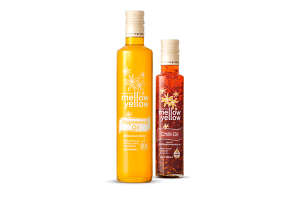 Oils
Oils Rapeseed Oil
Rapeseed Oil Chili Oil
Chili Oil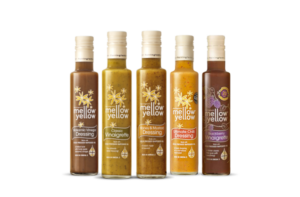 Dressings
Dressings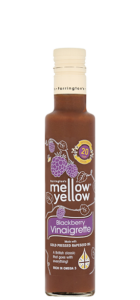 Blackberry Vinaigrette
Blackberry Vinaigrette Classic Vinaigrette
Classic Vinaigrette Balsamic Dressing
Balsamic Dressing Honey & Mustard
Honey & Mustard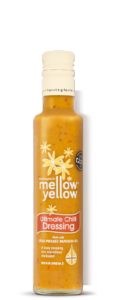 Ultimate Chilli Dressing
Ultimate Chilli Dressing